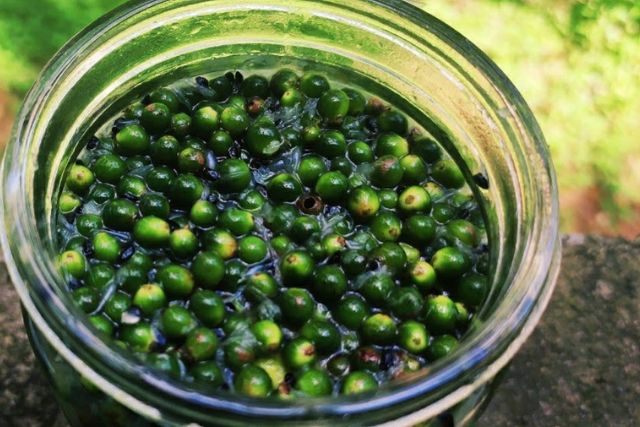Koshimbir Recipe : Maharashtrian Delight of Freshness
In the colorful tapestry of Indian cuisine, Koshimbir stands out as a refreshing and vibrant salad that embodies the essence of freshness and balance. Originating from Maharashtra, this traditional dish combines a medley of crisp vegetables, tangy yogurt, and aromatic spices to create a delightful side dish or accompaniment. Join us as we uncover the secrets of Koshimbir Recipe, from its cultural significance and nutritional benefits to a step-by-step guide on preparing this beloved recipe in your own kitchen.
Delving into the Origins and Cultural Significance of Koshimbir Recipe : Healthy Yogurt Dish
Koshimbir Recipe holds a cherished place in Maharashtrian cuisine, where it is served as a cooling accompaniment to spicy main dishes or enjoyed on its own as a light salad. The word “Koshimbir” is derived from the Marathi term “koshimbeere,” which translates to “finely chopped.” This reflects the meticulous preparation of the dish, where vegetables are finely diced or shredded to enhance their texture and blend flavors seamlessly.
Traditionally, Koshimbir was prepared using locally grown vegetables such as cucumber, carrot, tomato, and onion, combined with fresh yogurt (dahi) and tempered with mustard seeds, curry leaves, and green chilies. This combination not only showcases the region’s agricultural abundance but also highlights its culinary expertise in balancing flavors and textures.
Nutritional Benefits of Koshimbir Recipe : A Healthy Addition to Your Plate
Beyond its culinary appeal, Koshimbir Recipe offers a plethora of health benefits, making it a popular choice for those seeking a nutritious yet flavorful dish:
- Rich in Vitamins and Minerals: The assortment of fresh vegetables in Koshimbir provides essential vitamins (like vitamin C from tomatoes and carrots) and minerals (such as potassium from cucumbers), supporting overall health and well-being.
- Probiotic Benefits: Yogurt, a key ingredient in Koshimbir, contains probiotics that promote gut health and aid digestion, enhancing nutrient absorption from other foods in the meal.
- Low in Calories, High in Fiber: Koshimbir is low in calories but high in fiber due to its vegetable content, making it a satisfying addition to meals without compromising on nutrition.
How to Prepare Koshimbir Recipe: Step-by-Step Guide

Now, let’s explore a traditional recipe for preparing Koshimbir Recipe, showcasing its simplicity and the art of balancing flavors:
Ingredients:
- 1 cup cucumber, finely chopped
- 1 cup carrot, grated
- 1 cup tomato, finely chopped
- 1/2 cup onion, finely chopped
- 1 cup fresh yogurt (dahi), whisked until smooth
- 1/2 teaspoon mustard seeds
- 1-2 green chilies, finely chopped (adjust to taste)
- 5-6 curry leaves
- 1 tablespoon fresh coriander leaves, chopped
- Salt to taste
Instructions:
- Prepare the Vegetables: Wash and prepare all vegetables as per the instructions (finely chop cucumber, tomato, and onion; grate carrot).
- Mixing Yogurt: In a mixing bowl, whisk the fresh yogurt until smooth and creamy.
- Combine Vegetables: Add all the finely chopped vegetables (cucumber, carrot, tomato, onion) to the bowl with yogurt. Mix well to combine.
- Prepare Tempering: Heat a small pan and add a tablespoon of oil. Add mustard seeds and let them splutter. Add curry leaves and green chilies, sauté for a few seconds until fragrant.
- Add Tempering to Koshimbir: Pour the prepared tempering over the yogurt and vegetable mixture. Mix well to incorporate the flavors.
- Seasoning: Add salt to taste and garnish with fresh chopped coriander leaves.
- Chill and Serve: Refrigerate the Koshimbir for about 15-20 minutes to chill before serving. This helps to meld the flavors together.
Variations and Customizations of Koshimbir Recipe : Maharashtrian Salad
While the traditional recipe for Koshimbir highlights its Maharashtrian roots, there are numerous ways to customize and enhance this versatile dish:
- Fruit Variations: Add fruits like pineapple, pomegranate seeds, or grapes for a sweet and savory twist.
- Nutty Crunch: Incorporate roasted peanuts or cashews for added texture and protein.
- Herbal Infusion: Include fresh herbs like mint or parsley to elevate the freshness of the dish.
- Spice Levels: Adjust the amount of green chilies or add a pinch of chaat masala for a tangy kick.
Embracing Koshimbir’s Freshness and Flavor
Koshimbir exemplifies the art of blending fresh ingredients with simple yet flavorful techniques to create a dish that is not only nutritious but also celebrates the cultural heritage of Maharashtra. Whether enjoyed as a side salad, a refreshing accompaniment to spicy dishes, or a light meal on its own, Koshimbir Recipe offers a taste of tradition and a journey through the vibrant flavors of India’s culinary diversity.
By understanding its origins, nutritional benefits, and the joy of preparing it with seasonal vegetables and aromatic spices, you can embrace Koshimbir as a versatile addition to your culinary repertoire. Let Koshimbir inspire you to explore the richness of Maharashtrian cuisine and savor the freshness it brings to every meal.
Frequently Asked Questions (FAQs) about Koshimbir Recipe
What is Koshimbir?
Koshimbir is a traditional Maharashtrian salad or side dish made from a combination of fresh vegetables, primarily cucumber, carrot, tomato, and onion, mixed with yogurt (dahi). It is seasoned with mustard seeds, curry leaves, green chilies, and garnished with fresh coriander leaves. Koshimbir is known for its refreshing taste, crunchy texture, and ability to complement spicy Maharashtrian dishes.
How do you pronounce Koshimbir?
Koshimbir is pronounced as “ko-shim-beer.” The emphasis is on the first syllable “ko,” followed by “shim” and ending with “beer.” It’s important to note that the “shim” part is pronounced with a short “i” sound, similar to the “i” in the word “sit.”
What are the health benefits of Koshimbir?
Koshimbir offers several health benefits:
Nutrient-rich Vegetables: The combination of cucumber, carrot, tomato, and onion provides essential vitamins (like vitamin C and A) and minerals (such as potassium and fiber), supporting overall health.
Probiotic Benefits: Yogurt used in Koshimbir contains probiotics that promote gut health and aid digestion.
Low in Calories: Koshimbir is low in calories and fat, making it a healthy option for those watching their calorie intake.
Can Koshimbir be made vegan?
Yes, Koshimbir can be made vegan by using dairy-free yogurt alternatives such as almond yogurt, coconut yogurt, or soy yogurt. These substitutes provide a similar creamy texture and probiotic benefits without using dairy products.
What are some variations of Koshimbir?
There are several variations of Koshimbir that cater to different tastes and preferences:
Fruit Koshimbir: Adding fruits like pineapple, grapes, or pomegranate seeds for a sweet and tangy twist.
Spicy Koshimbir: Increasing the amount of green chilies or adding chopped green bell peppers for a spicier version.
Nutty Koshimbir: Incorporating roasted peanuts, cashews, or almonds for added crunch and protein.
Herbed Koshimbir: Adding fresh herbs like mint, cilantro, or parsley for a refreshing herbal flavor.






